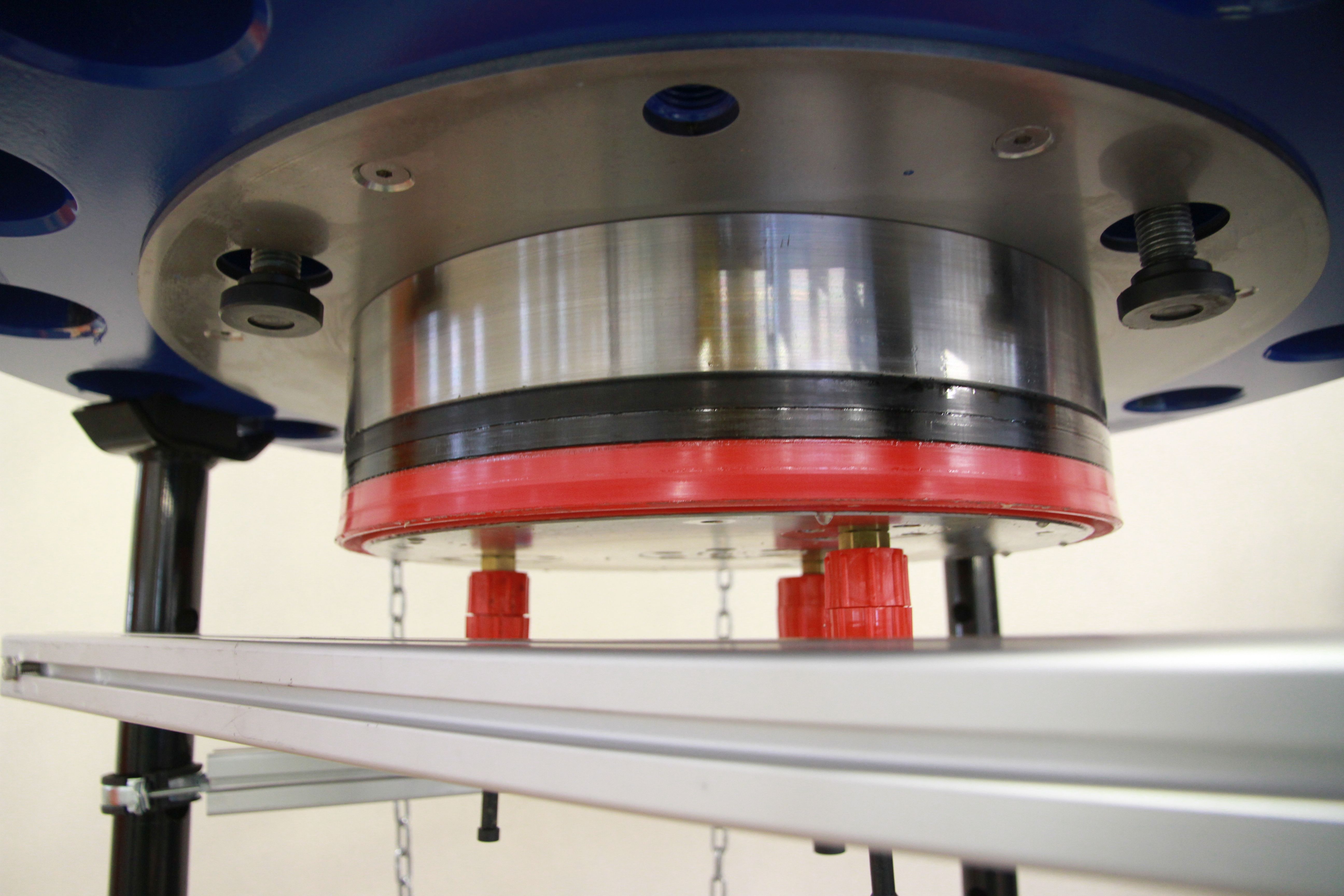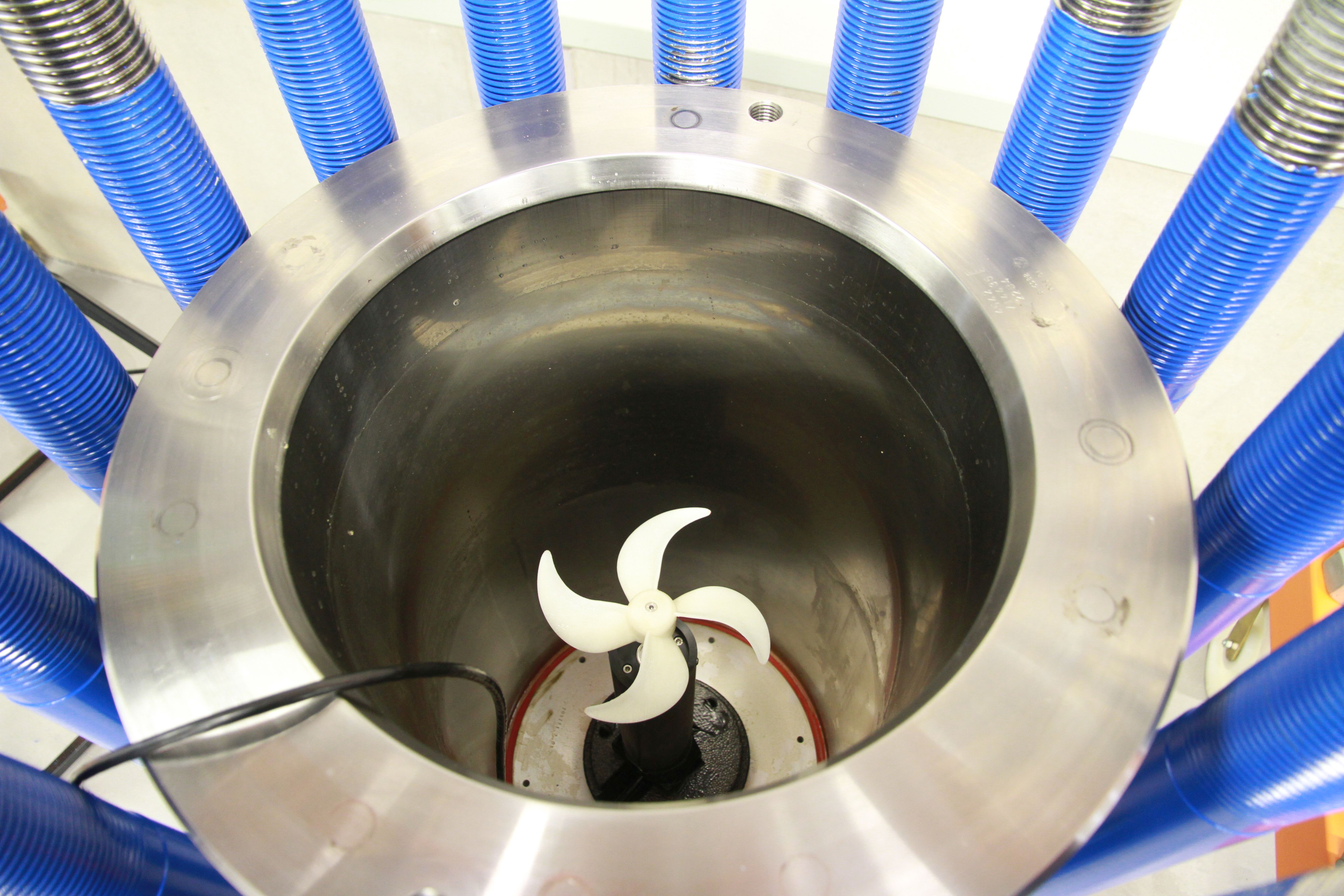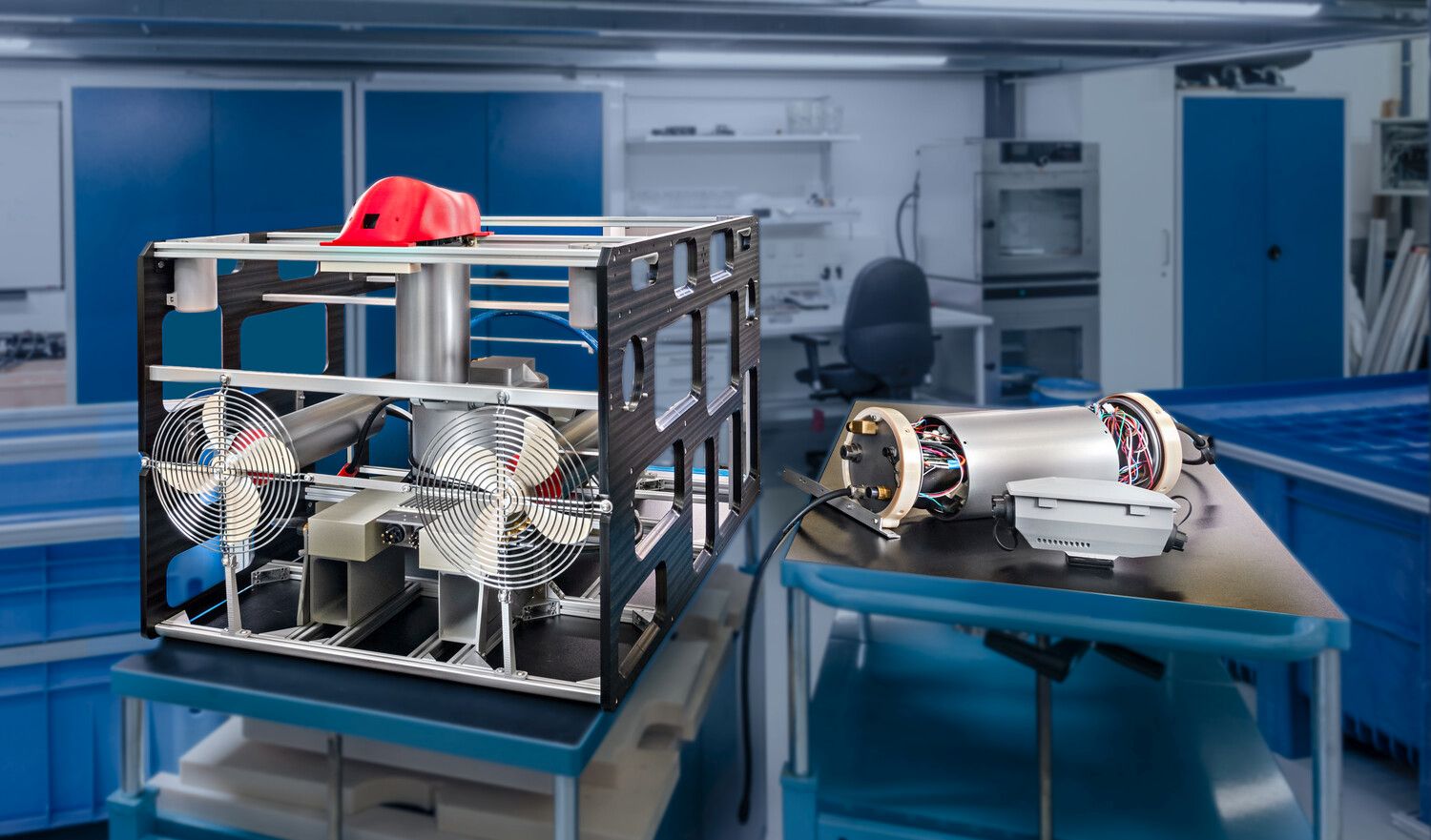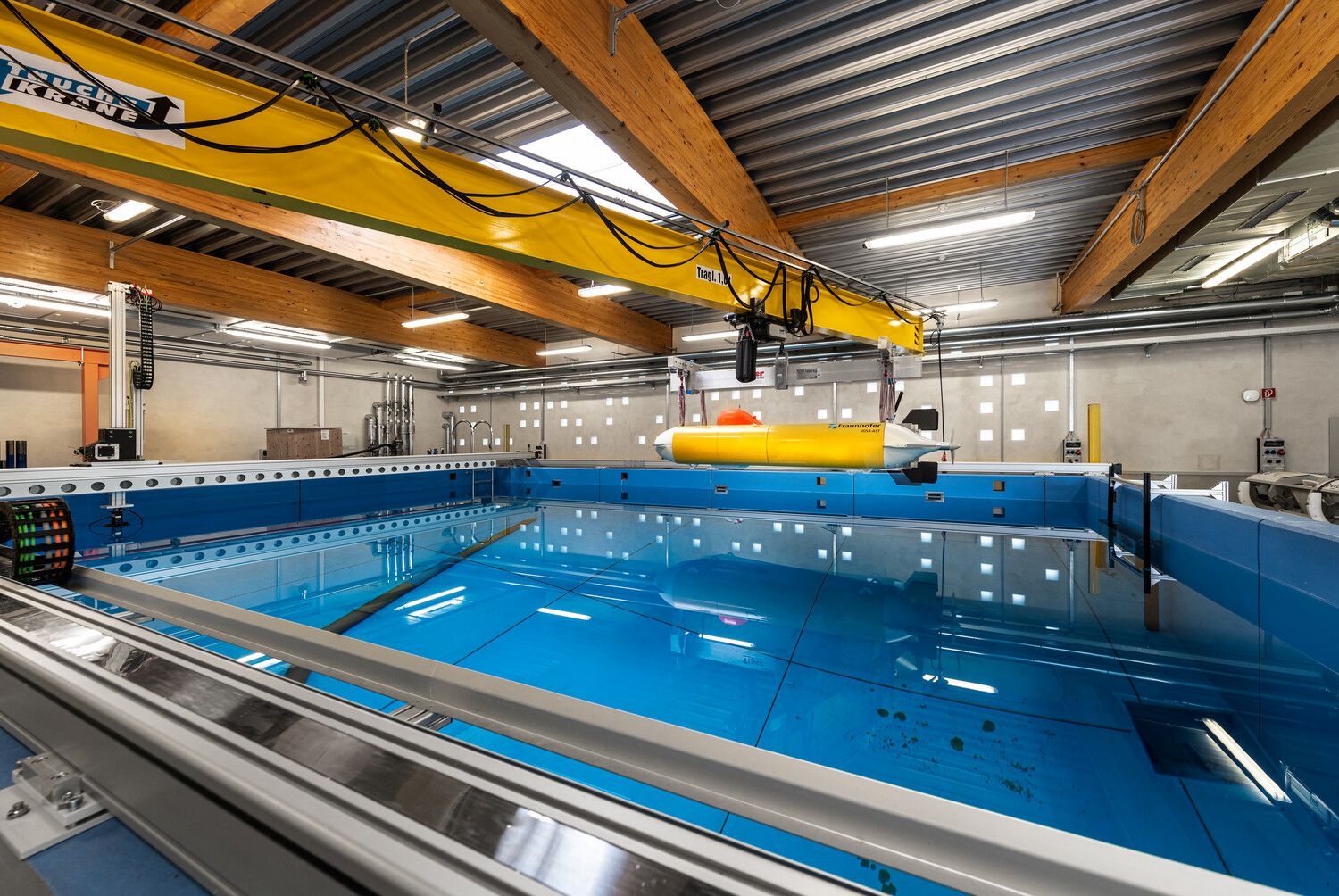


The Fraunhofer Institute for Applied Systems Engineering AST has been developing innovative solutions in the field of maritime systems in close cooperation with the Ilmenau University of Technology for more than 10 years. Successfully completed research and industrial projects have led to a steady expansion of know-how in the field of underwater robotics. On this basis and with the help of internal research efforts, a pool of underwater vehicles has been developed over the years, which until now had to be put into operation mainly in domestic dams. On the one hand, this circumstance is time-consuming and cost-intensive; on the other hand, the number of external factors (weather, currents, etc.) also increases significantly, thus increasing the development effort. The new research basin eliminates these disadvantages and serves in particular to develop innovative guidance systems for partially and fully autonomous underwater vehicles. Since 2014, the research platform has also had a special pressure testing facility, which can be used to test larger assemblies for tightness and pressure stability before they are deployed in dams or oceans. Students also benefit in hardware and software development through the acquisition of practical knowledge in the field of vehicle design and control. These advantages and the likewise improved conditions for the acquisition of new industrial and research projects make the test basin an important building block in the future concept of Fraunhofer AST.
Topics and solutions
- Software development for surface water and underwater vehicles
- Guidance software for autonomous and semi-autonomous underwater vehicles
- Proprietary framework for the development of modular software systems
- Navigation and control
- Integration of USBL modems into navigation filters ("distributed navigation")
- Automatic identification and controller design prior to the mission
- Design and construction of hardware for underwater vehicles
- Remotely operated and autonomous underwater vehicles (e.g. ExAUV, C-Wolf)
- Sections for the installation of actuators and sensors
- Pressure neutral electronics and sensor modules
Data of the tank
- Dimensions: 12m x 8m x 3m (LxWxD)
- Water volume: approx. 250 m³
- Column-mounted slewing crane with 10-meter jib, 1 t lifting capacity
- 3D portal (3-axis space portal)
- Water purification via sand filter system
- Energy and data interfaces
- Rail system for object equipment of the test basin, e.g. cameras, lamps, obstacles etc.
- Test objects: Sheet pile wall, walls with damaged areas (masonry, concrete), pipelines
Pressure test facility
- Inner dimensions: d = 400 mm, l = 630 mm
- Pressure range: 0 to 1200 bar
- Control accuracy: 0.5 bar
- Pressure cycles programmable
- Connections for electrical connections
- storage tank for test medium
Test sensors
- Blueview Sonar P900
- Blueview Sonar MB2250
- Tritech Micron DST
- Valeport Altimeter VA500
- Valeport miniSVS
- Evologics USBL Modems
- Ethernet camera system + LED lights
- CDL INTO NAVPOS3
- DVL NavQuest
Vehicle pool
- Diver assistance system "Seebär" (1.3 m, 40 kg, 300 m diving depth)
- Submersible vehicle "C-Wolf" (2.0 m, 120 kg, 300 m diving depth)
- TORTUGA ROV family (0.8 m, 35 kg, 150 m diving depth)
- Remotely Operated Catamaran "C-Cat" (3.6 m, 100 kg, payload 300 kg)
- Deep Diving AUV "DeDAvE" (3.6 m, 700 kg, 2000 m diving depth)
 Advanced System Technology branch AST of Fraunhofer IOSB
Advanced System Technology branch AST of Fraunhofer IOSB